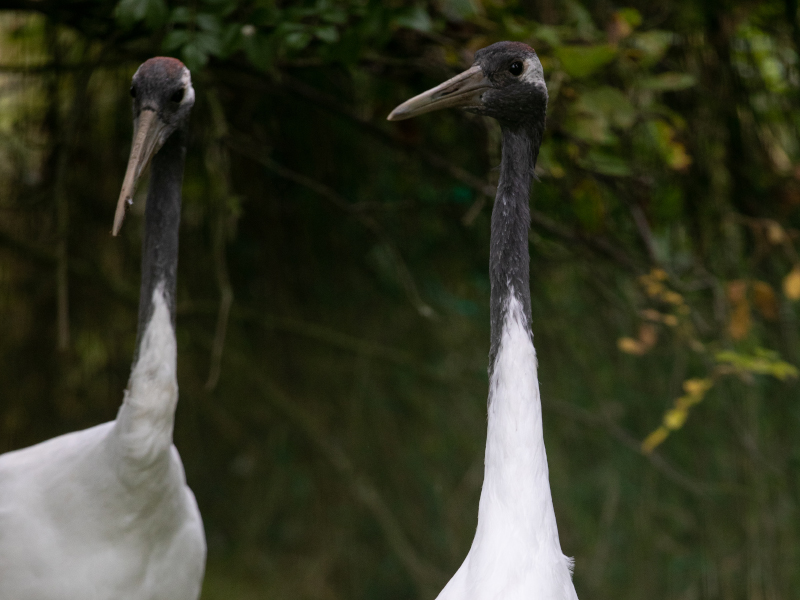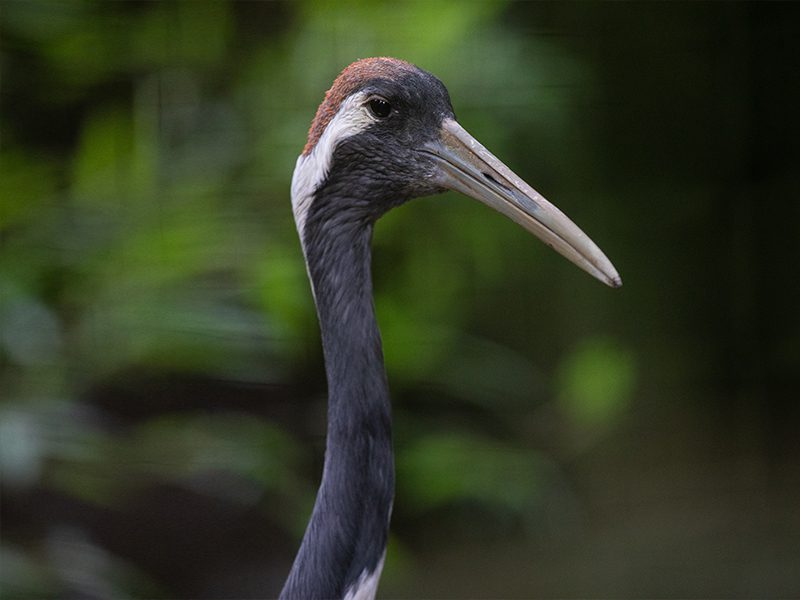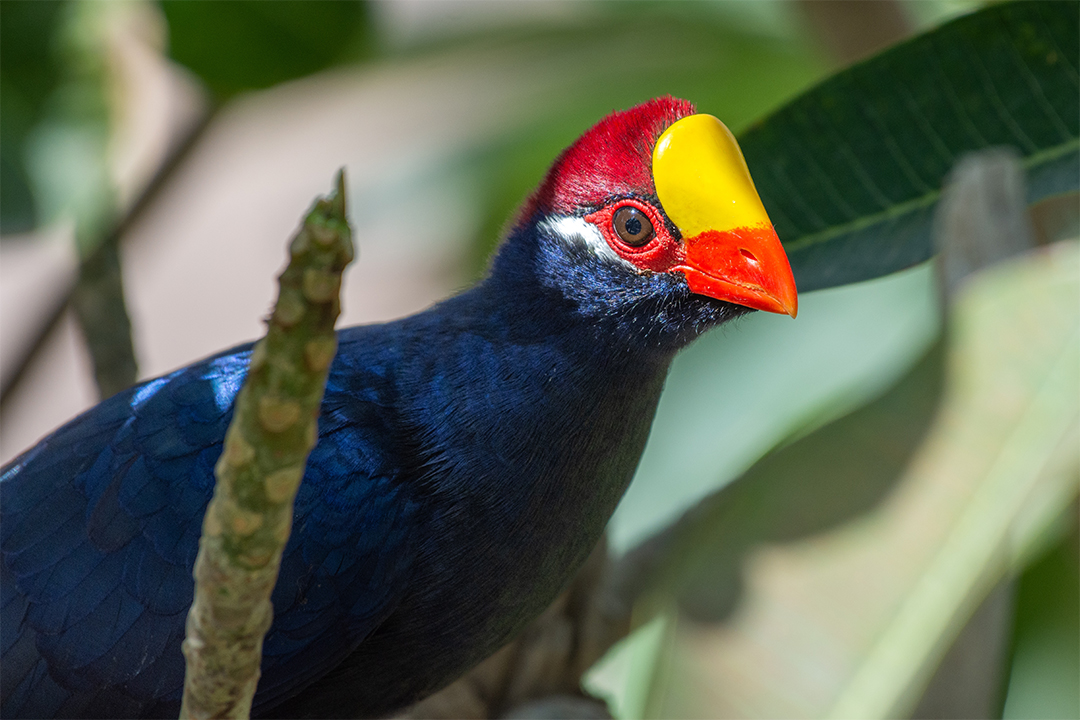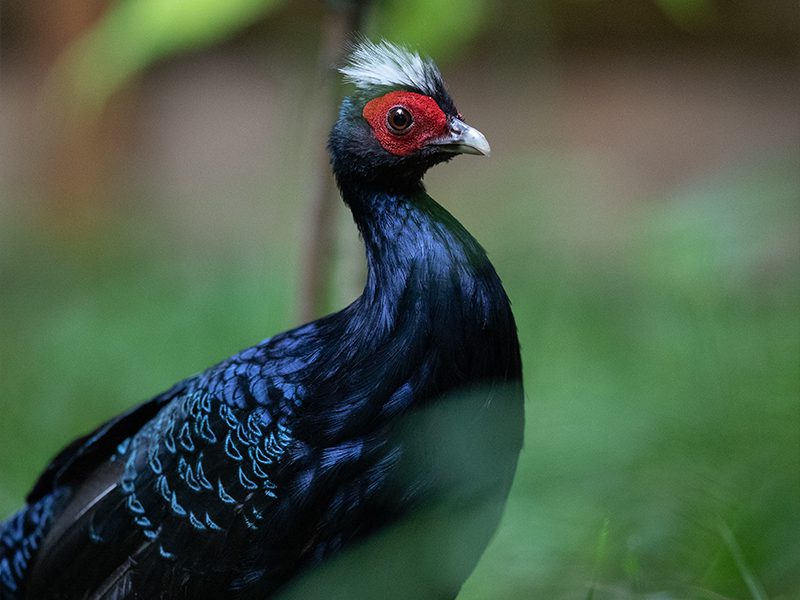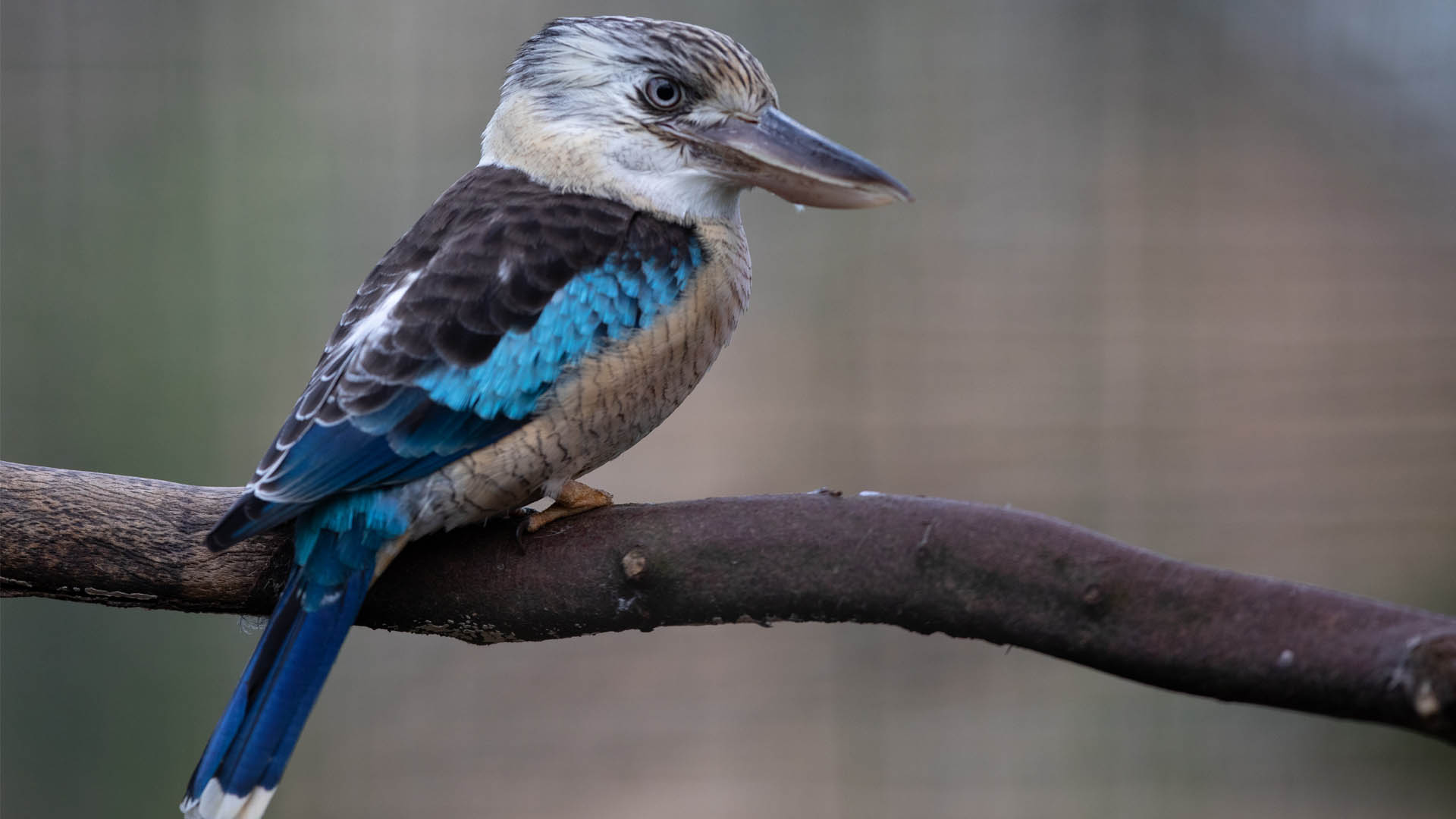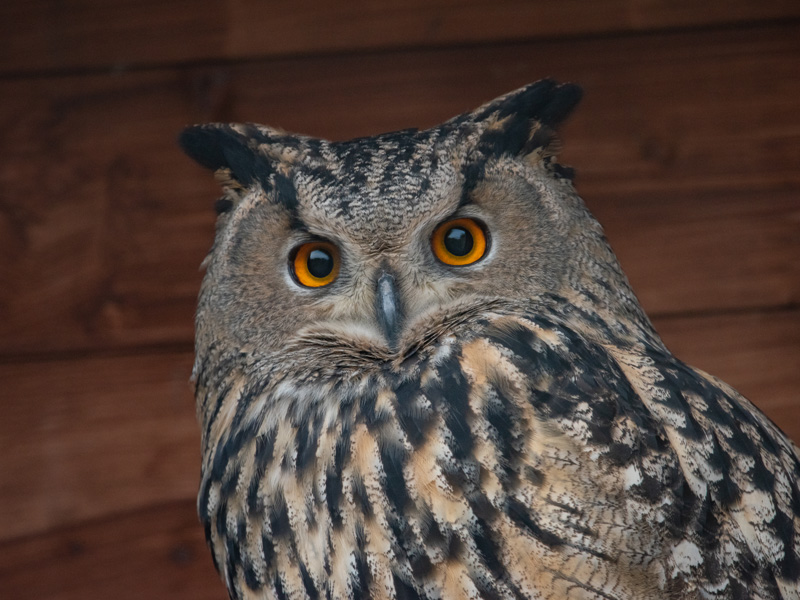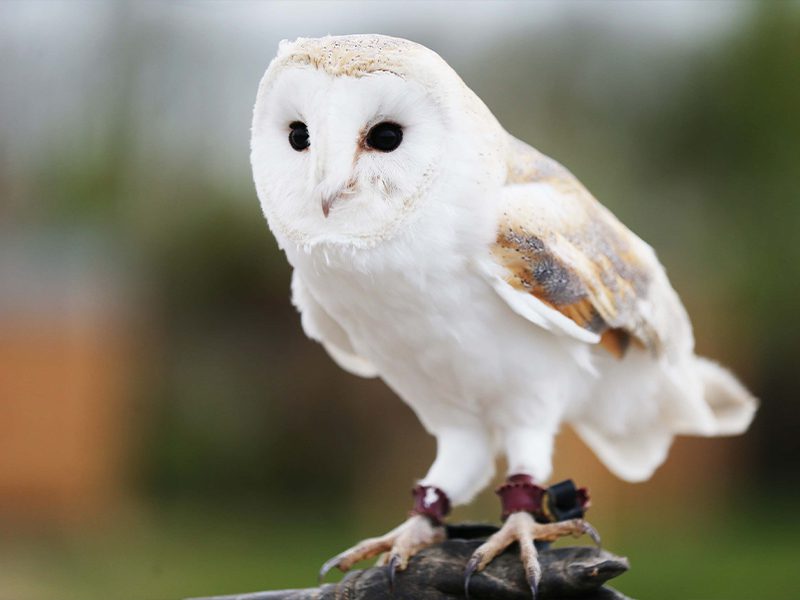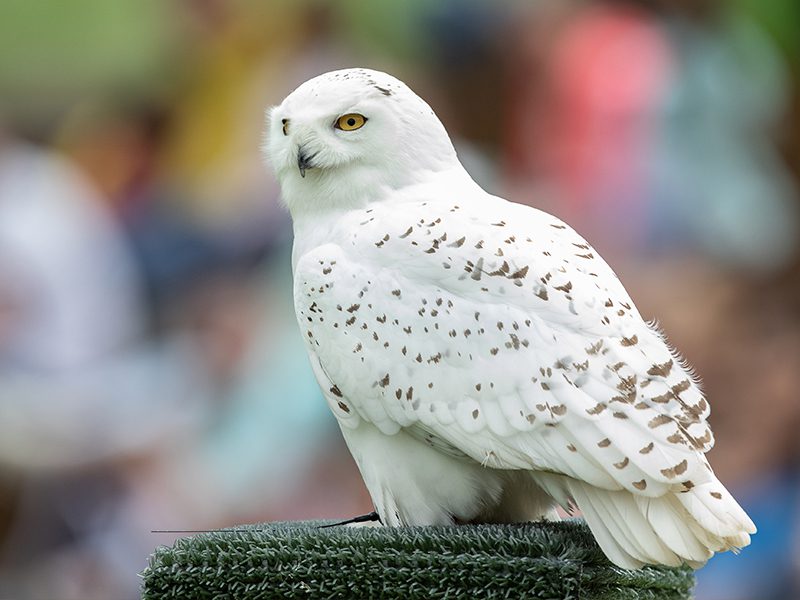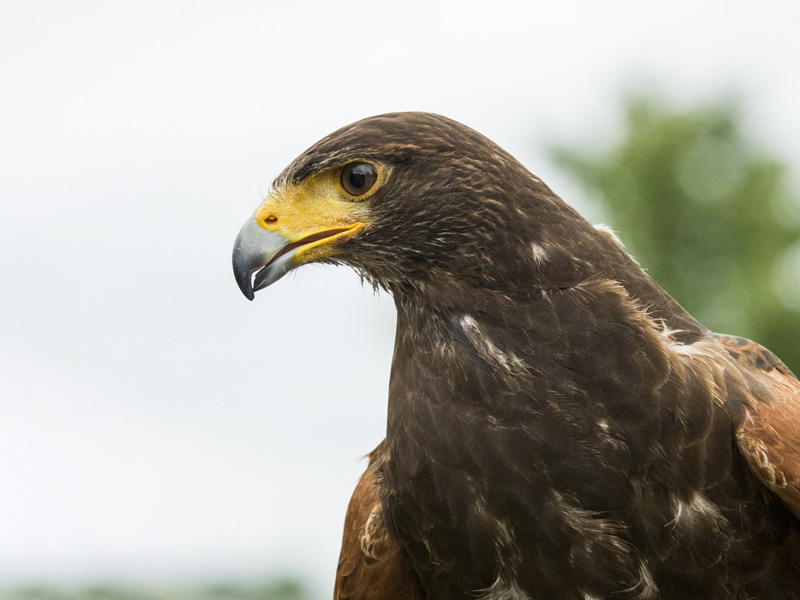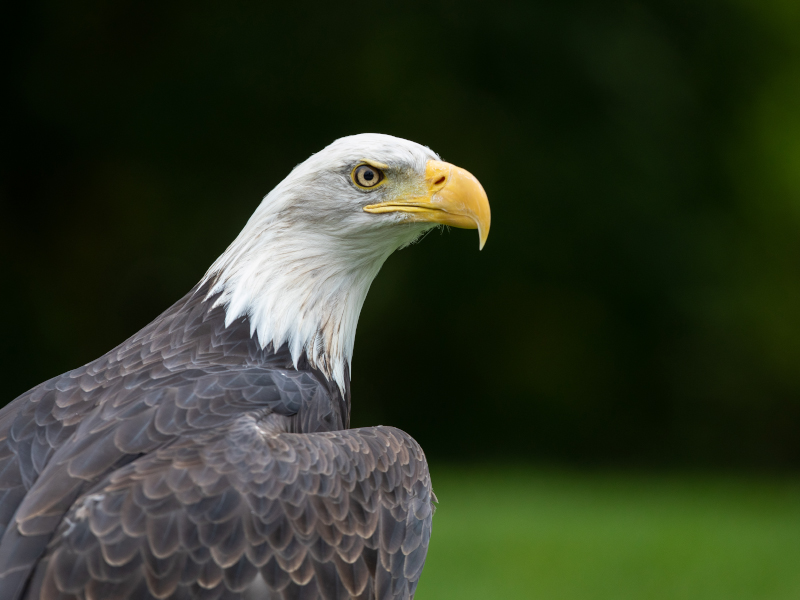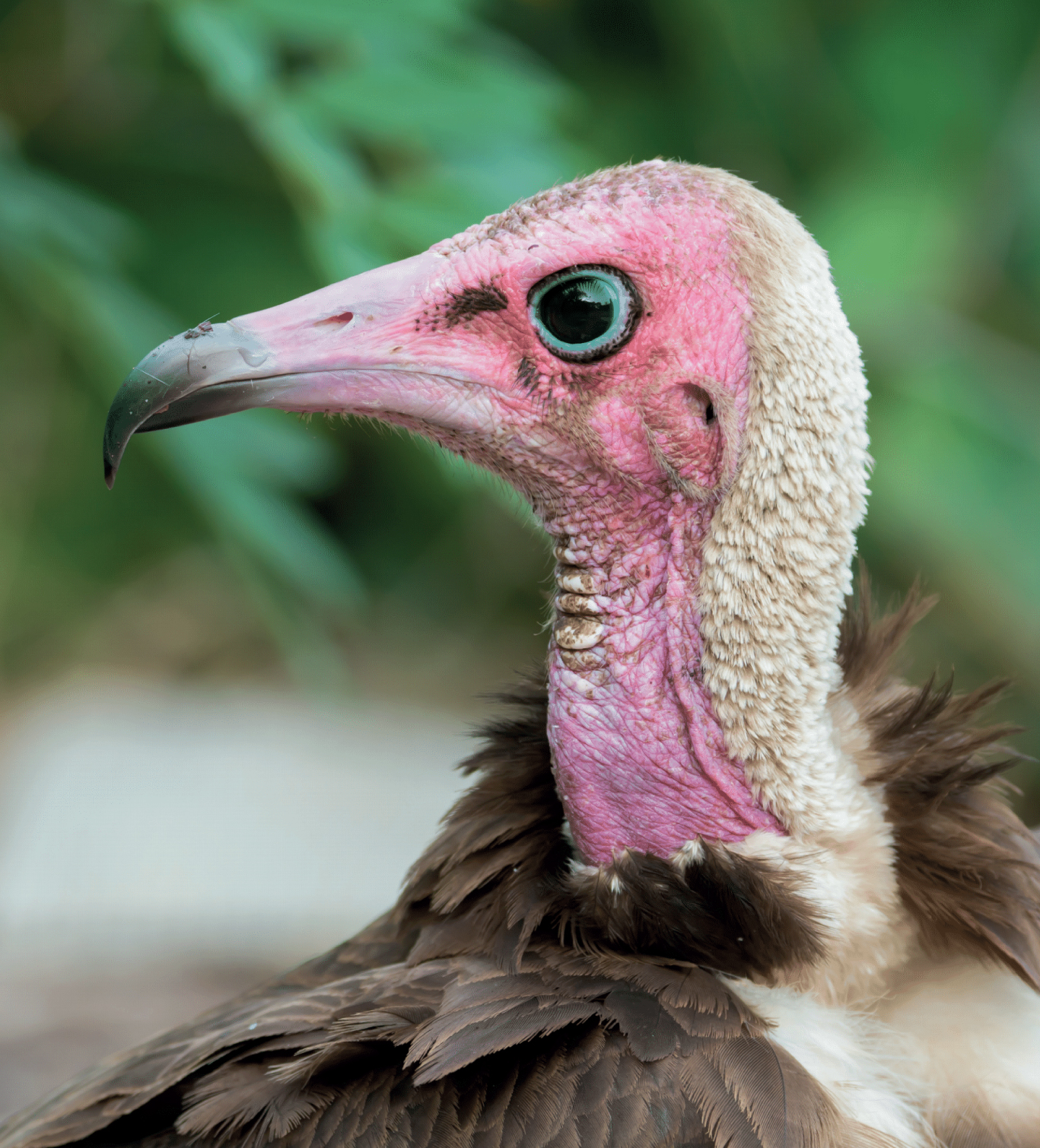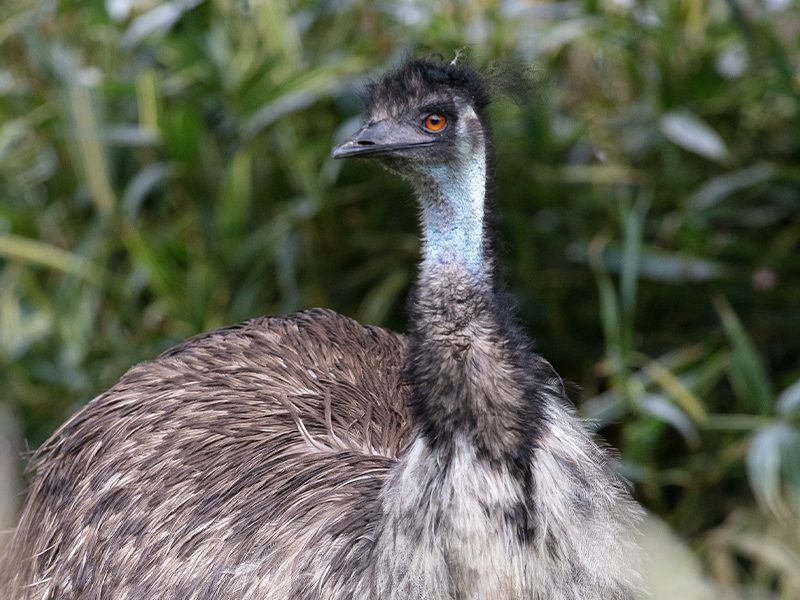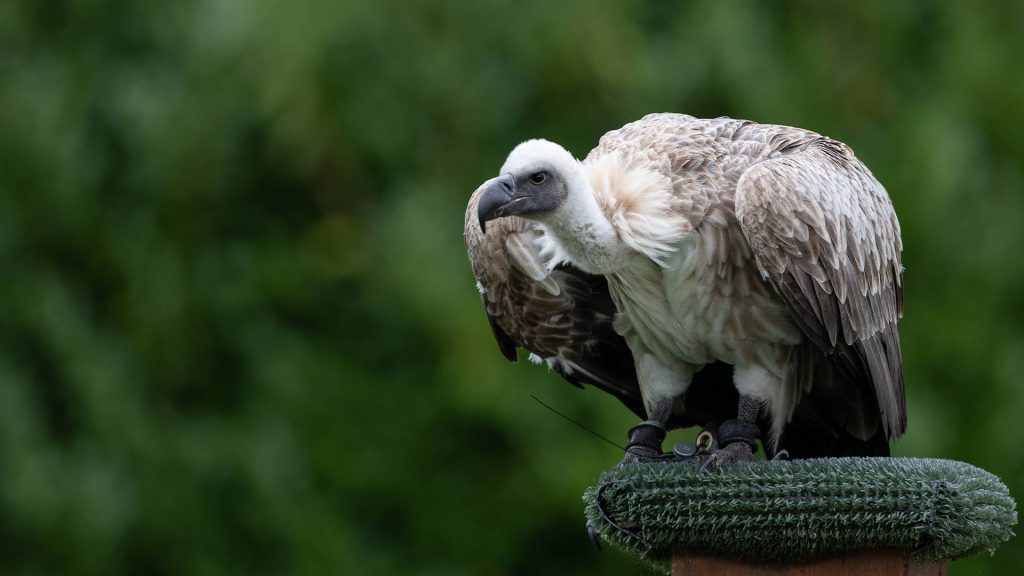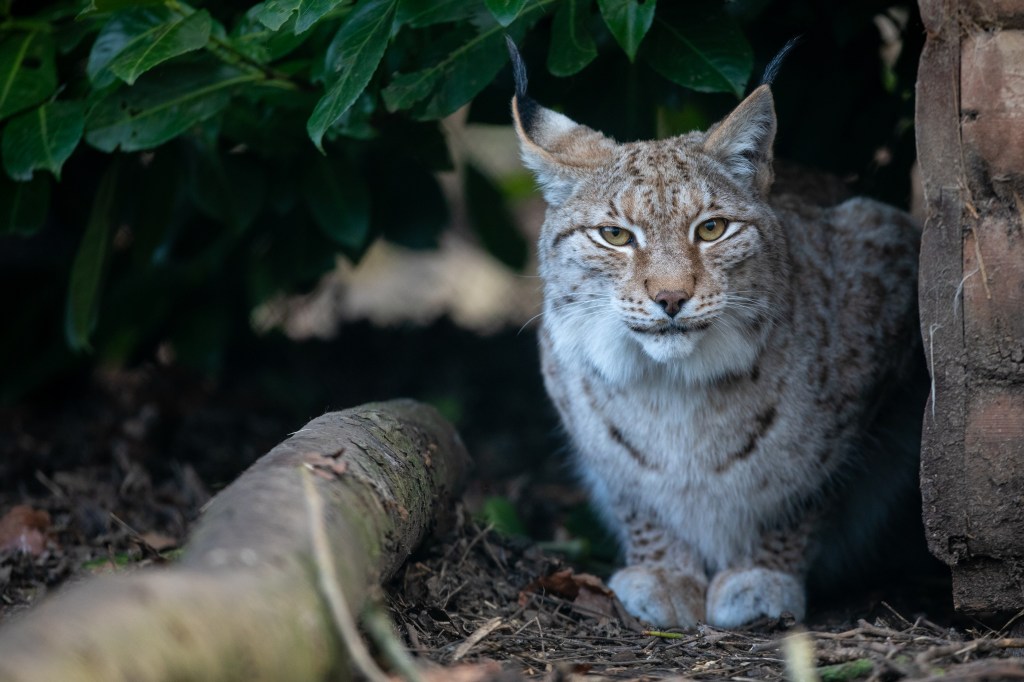Red-crowed cranes have elongated, pointy beaks and long legs allowing them to forage in wetland areas. They an exposed patch of red skin on their head, giving rise to their name. They are a large bird that has a long neck that is black on the throat. Their plumage is mostly white except for contrasting black feathers along the bottom of their wings giving them a striking appearance.
Their long legs and beak allow them to wade through flooded areas, in search of food, without getting their feathers wet.
Japanese red-crowned cranes live in flocks and will pair up with one partner to breed. They are mostly non-migratory with some of the population migrating to Hokkaido to overwinter.

Popular Searches
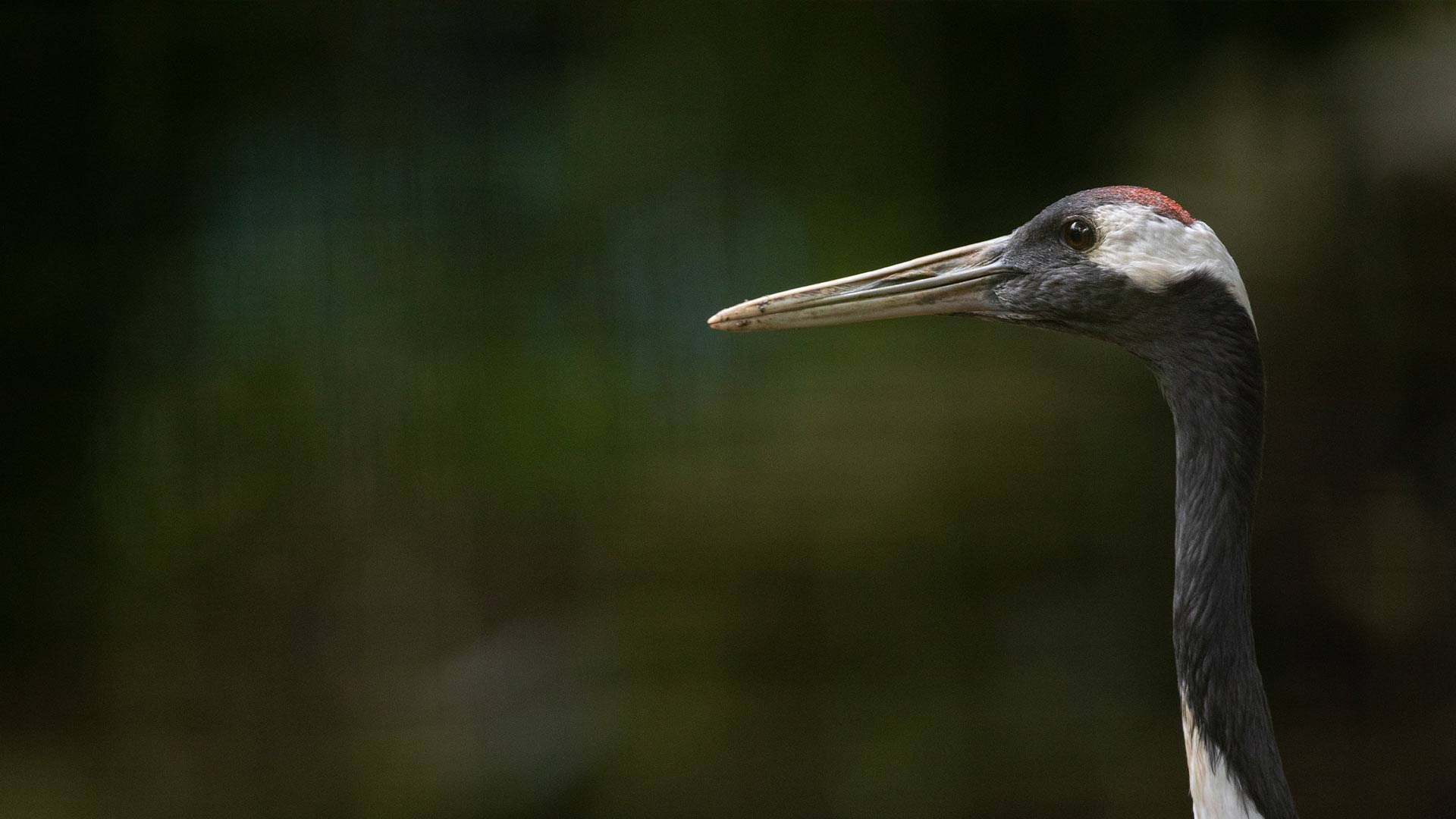
Red-crowned crane
-
Introduction
-
Conservation
Red-crowned cranes are vulnerable
The species is at a high risk due to threats such as industrial and economic development in Russia and China, especially agricultural expansion, and deforestation, resulting in the loss of their wetland habitats.
Fortunately, measures are being taken to protect the species such as international agreements and cooperative research on this migratory bird. Protected areas have also been designated.
Emerald Park conservation contribution:
EEP
Japanese, red-crowned crane are part of the EAZA Ex-situ Programme (EEP). This which means that their population is managed to ensure that there are heathy populations of animals within EAZA member zoos and for reintroduction in the future. -
Habitat
Red-crowned cranes are found along the Amur river basin in east Russia and south-eastern Asia, including China and Japan.
They rely on marshy habitat, for feeding and nesting, and so can be found in wetland, coastal and intertidal areas.
-
Fun Facts
Red-crowned cranes are monogamous with pairs staying together throughout the year.
The male and female carry out dancing displays during courtship which includes bows, head bobs and leaps. They will also call-in unison during this behaviour.
Both the male and female help build the nest as well as incubating the eggs. Once the chicks are hatched he female will do most of the feeding while the male will protect nest.



